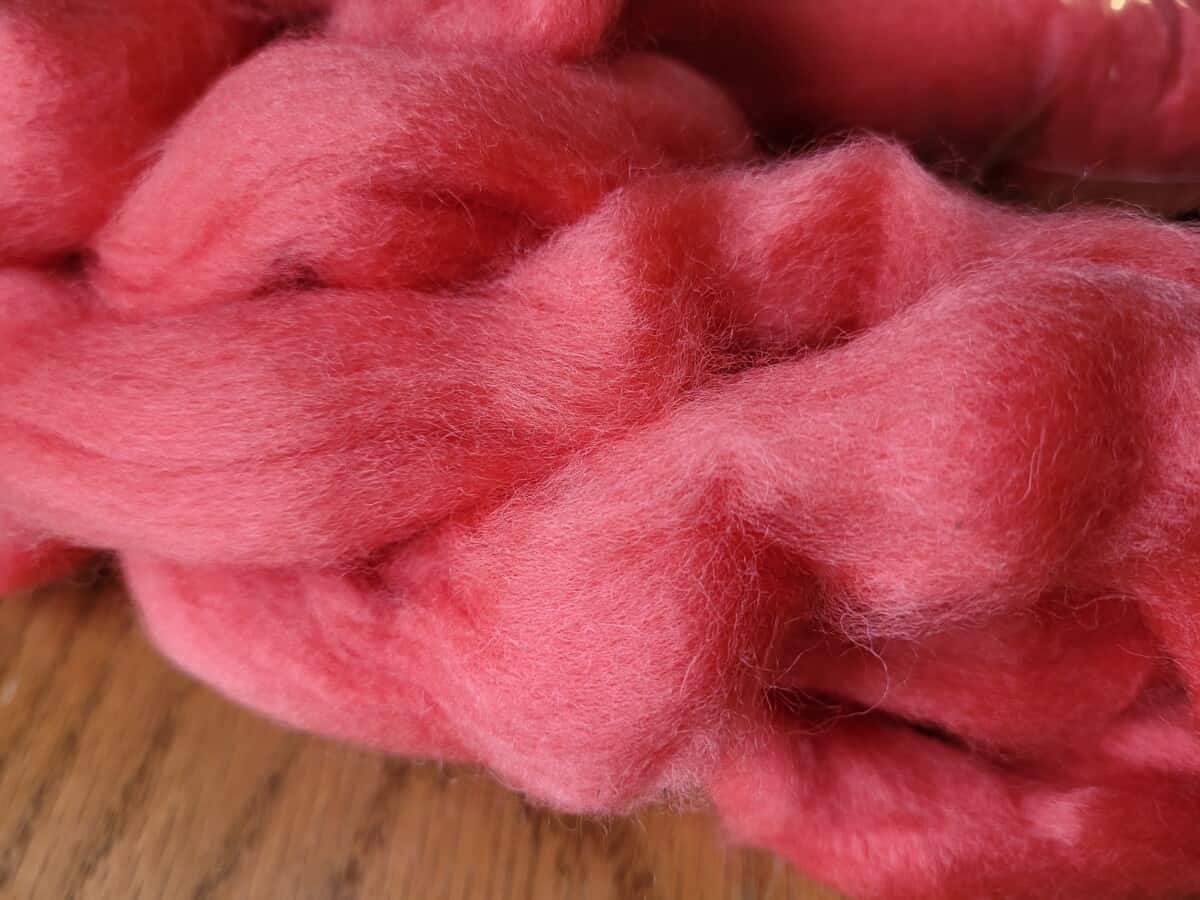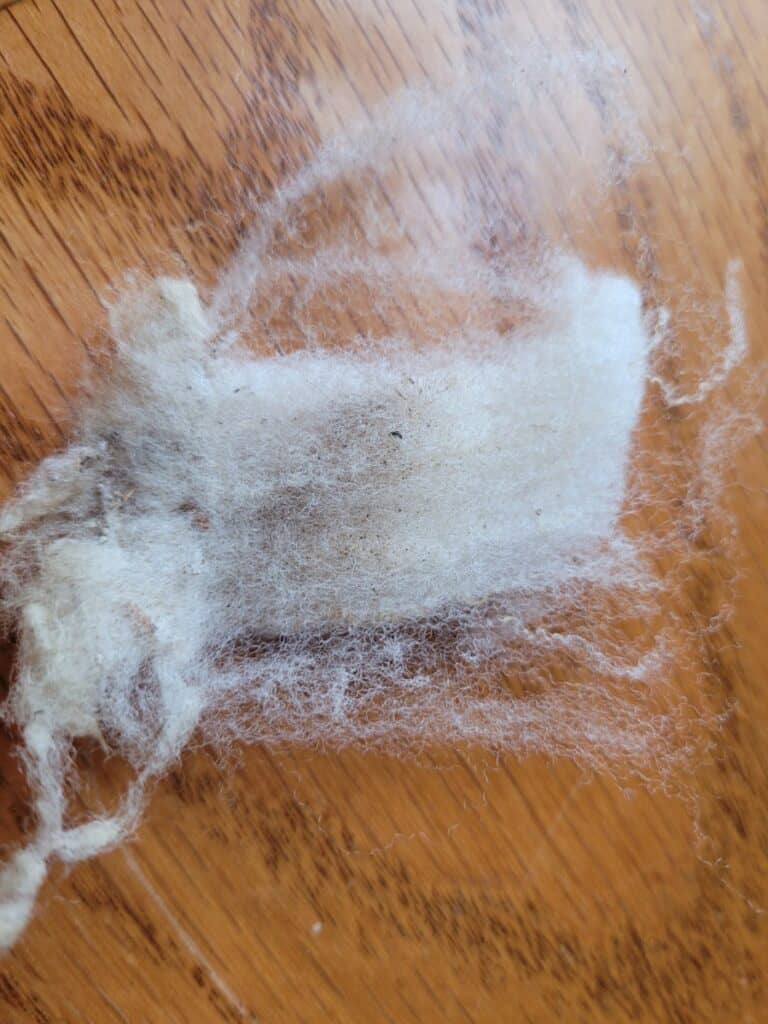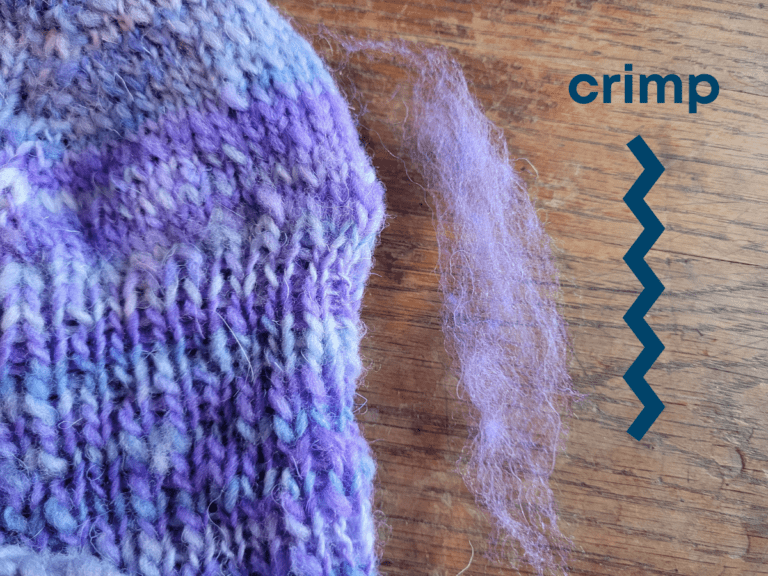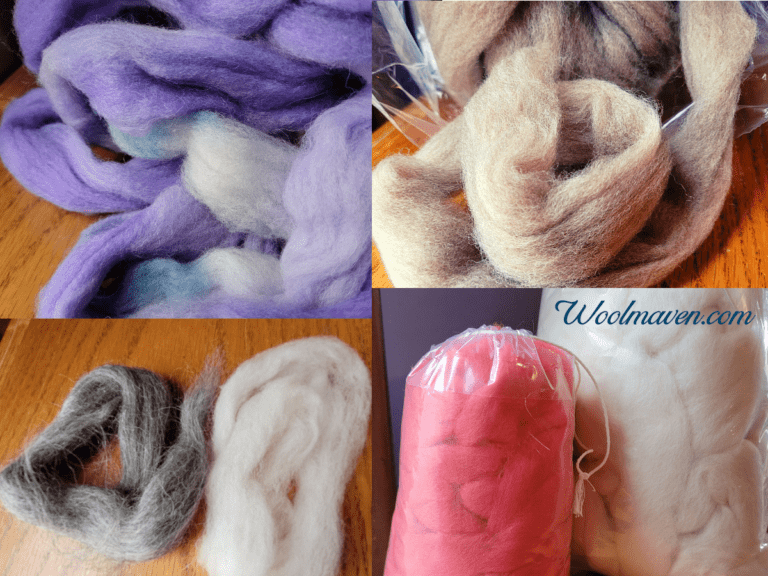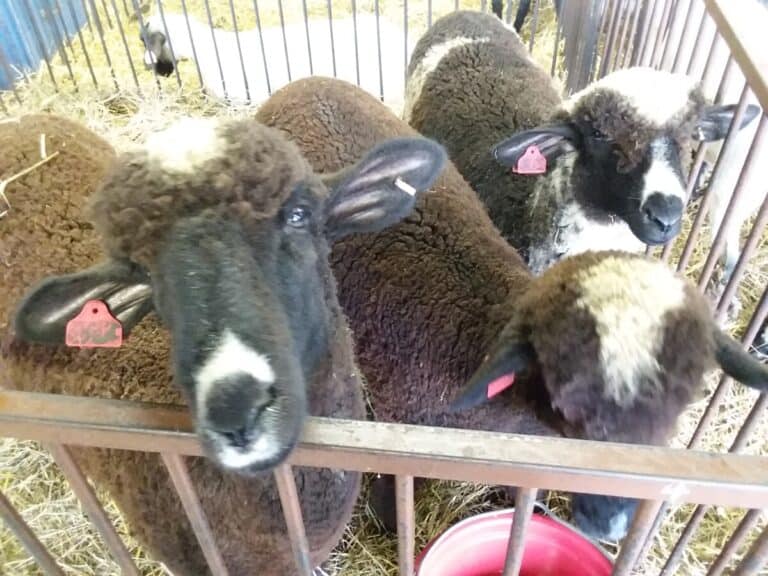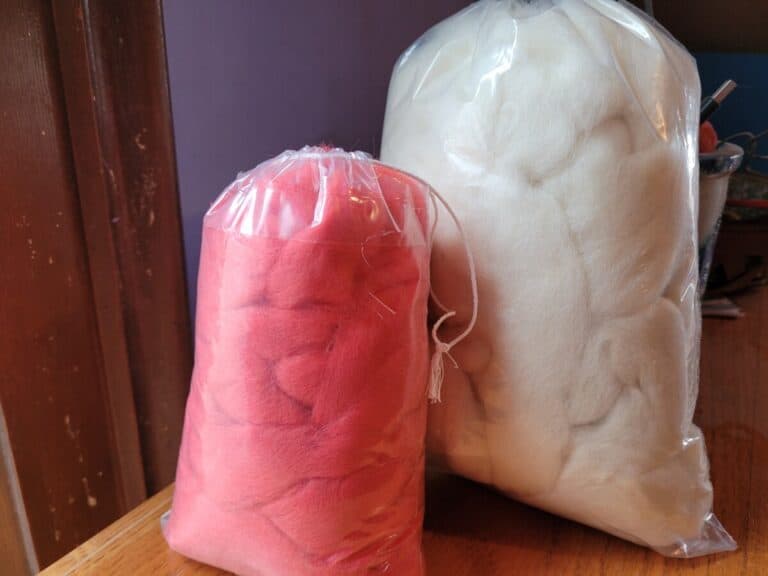What Is The Easiest Wool To Spin?
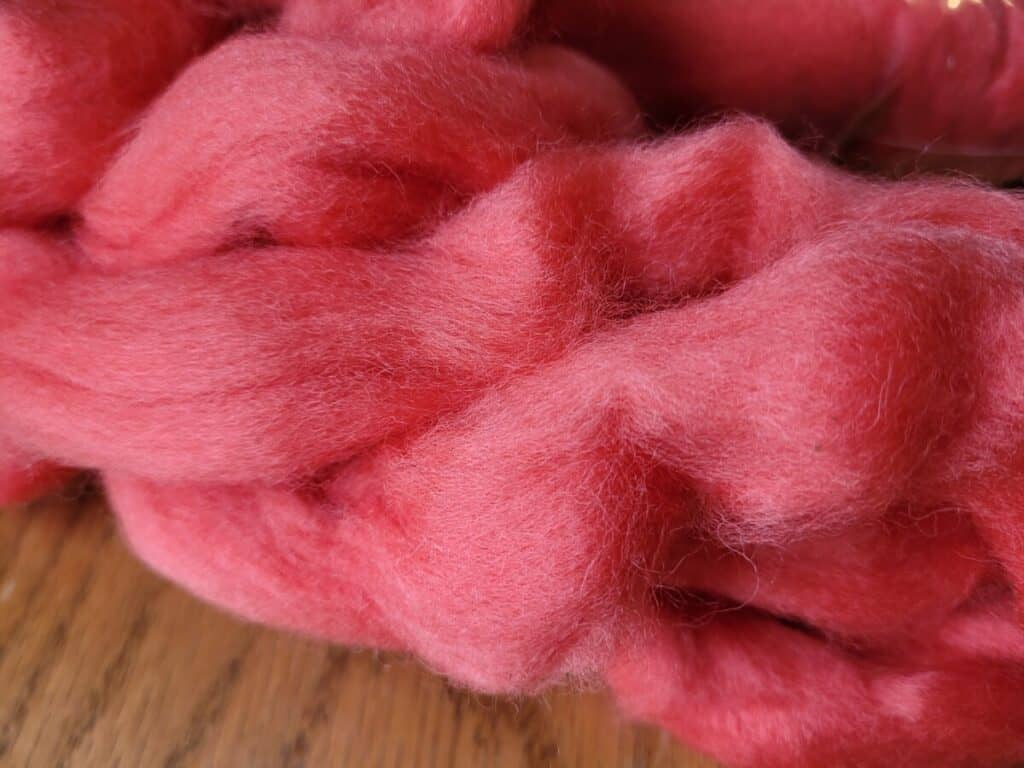
When you are just getting started with handspinning, you’ll want to work with the easiest wool to use while you are learning.
There are a lot of wonderful wools out there to choose from and many are listed as easy to spin, but what is the easiest wool of all to spin?
The easiest wool to spin is Corriedale combed top. Corriedale is an easy to find medium wool with a workable length and grip, (so the yarn stays together more easily) and combed top is a ready to spin fiber preparation that is easy for beginners to work with.
Cost To Spin Wool goes over the things you should plan on getting to continue your spinning journey, not just to get started-but that’s covered, too!
This post contains affiliate links, which means I receive commissions if you choose to purchase through links I provide (at no extra cost to you).
Looking for a great resource on which fiber to pick and how best to use it? Consider getting The Fleece And Fiber Sourcebook, filled with wonderful pictures and details on just about any wool you can find.
Want a list of easy to spin wools that are perfect for beginners? Get my list that tells you exactly what to get and what to avoid!
Easiest wool to spin is Corriedale combed top
The easiest wool to spin is Corriedale combed top. Corriedale combed top will be available at most online shops that carry spinning supplies and is perfect for beginning handspinners.
If you are not familiar with wool, Corriedale is the breed of sheep that the wool comes from and combed top is the way the wool is prepared for use.
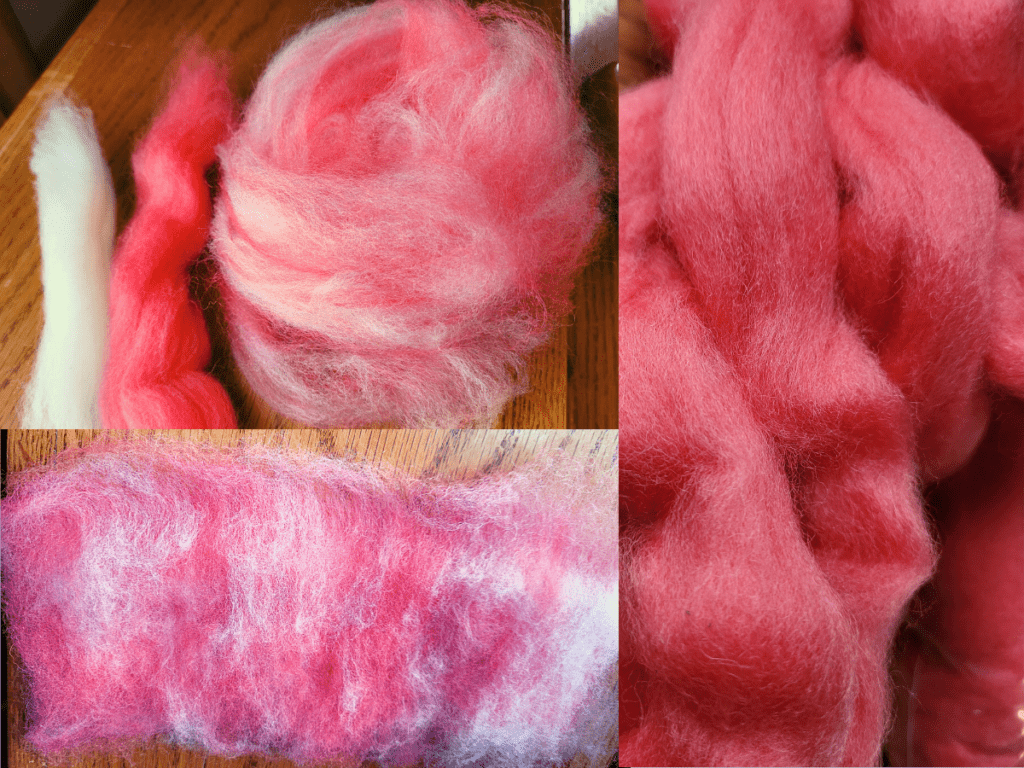
Characteristics of Corriedale wool for spinning
Corriedale is a medium wool that has a nice crimp, very workable staple length of 3-5 inches.
The crimp gives the wool some grip, which helps you keep your yarn together as you are learning to spin!
I had a huge problem with yarn slipping through my fingers when I was learning, grip really helps!
The crimp will also make a yarn with a bit of bounce and memory, meaning it will stretch then bounce back into shape. (Not all wools do this.)
Most beginning spinners will find a coarser carded wool fiber such as Corriedale Sliver easier to draft and spin.
Pacific Wool and Fiber/spinning tips
Corriedale has a micron count in anywhere from 25-30.
It is a versatile fiber that is a great choice for hats and mittens or anything else that you want to wear and need to have a bit of resiliency to the garment.
Granted, Corriedale is not perfect for all projects you’ll ever want to make in your woolcrafting career, but what is? For most spinning, especially new folks, Corriedale is tough to beat.
Corriedale combed top
Combed top means that the wool is ready to spin when you get it. All of the short fibers, noils, nepps and debris have been combed out of the wool in the proccessing.
The combed top will look like a smooth river of wool and is very easy to work with. You can split it into smaller sections, lengthen it out or work with it as is.
Combed top is sometimes listed as more generically as roving. Actual roving is not the same as combed top, but chances are if you read the description, the wool is combed top, most are.
Combed Top Vs Roving goes into the differences between the two and when each is best for your project.
Other easy to spin wools
If you are not able to find Corriedale wool, which would be a surprise, or the supplier you like is out of stock, there are a few other wools that are also easy to work with for beginners.
Keep in mind, these wools are second choice compared to Corriedale, but they are some of the better choices if you have to choose another option.
Other pretty easy to spin breed specific wools are Romney and Blue Faced Leicester (pronounced Less-ter and commonly abbreviated as BFL).
In general, an easy to spin wool will:
- be a medium wool (23-30 microns, with over 25 being easier to work with)
- have a staple length of around 4 inches (no shorter than 3.5)
- have some crimp, which helps you keep the yarn together as you are spinning
As you are considering which wool to start with, any wool that has the above characteristics will be fairly easy to use for a beginner.
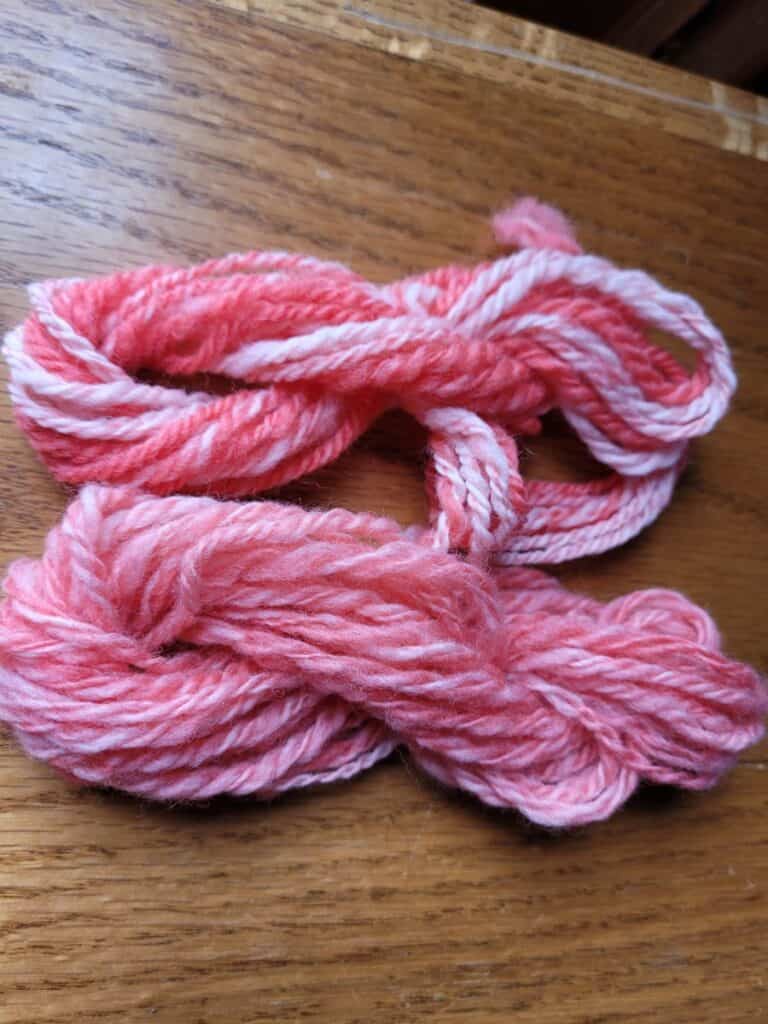
Use beginner friendly wool
If you choose a wool that is different from Corriedale, make sure that the description specifically lists that it is a beginner friendly wool that is very easy to spin.
Most of the breed descriptions for spinnable wool will list that it is easy to spin, of course they would, they love their breed’s wool! But that is different from easy for a beginner.
Need to know which wools to order? Get my list of beginner friendly wools and know that you are starting off right!
As I improve my spinning and start to work outside of my normal, most any wool that is new to me becomes easy to spin, once I have some time in at the wheel.
Starting out, it can be a challenge to get my fingers and my mind coordinated while spinning the new to me fiber. It takes some time to figure out the nuances of each wool.
Now, challenging myself with a new to me wool that catches my eye is one of the highlights of spinning!
When I started, these neat fibers that I am playing around with now, would have been difficult, at best. Start easy, get some experience and basic skill, then move to exploring other wools.
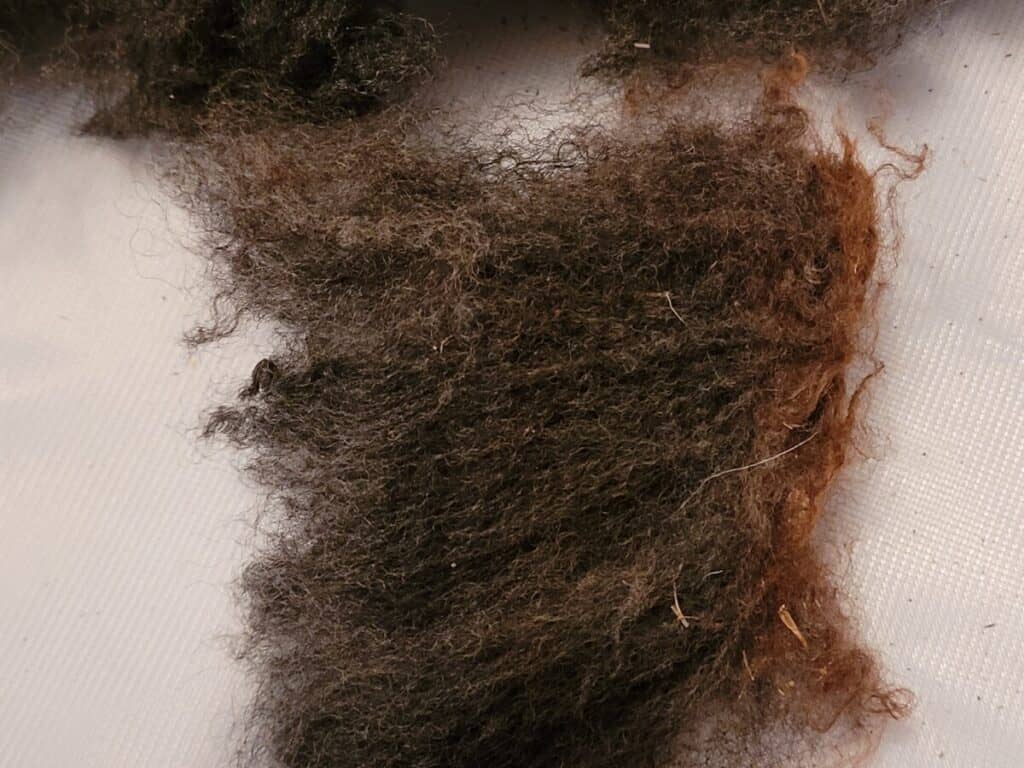
I love the color and, once washed and carded, it is pretty nice wool to work with. Were she not my sheep, I would pass on this fleece and get different naturally colored fleece with more length and less debris.
Wool characteristics to avoid
Just like there are things that make a wool perfect for new spinners, there are also characteristics that make a wool challenging for beginners.
You’ll save yourself some frustration if you carefully select the wool you start with by avoiding any wools with these characteristics:
- short fiber-anything under 4 inches is harder to work with
- overly long fibers-anything over 5 inches is going to be a challenge
- very fine-any wool, or other fiber under 23 microns will be harder to spin
- very coarse-any wool over 32 or so will be harder to spin
- VM (vegetable matter) or other debris-wool with contaminants in it gives you more to work around as you are spinning, this makes your learning more complicated!
- dirty-start with washed and prepared wool, combed top is perfect!
- slippery-any wool with luster or shine will be slippery and hard to keep together
- variable-you need all the fibers in the wool to be similar, variability in the wool complicates the spinning
- difficult to find or rare-you’ll have some “mess ups” as you get started spinning, use a more common wool to learn with then try out something special
- felting wool-the shorter fibers of feltable wools can be sold as felting wool. Even if this is a breed you want to try, do not buy the felting wool version, get the handspinning fiber!
So, what’s wrong with a wool that has some of these characteristics? Nothing! It is just going to be harder for you to work with as you are learning.
For example, I ordered a Merino and silk blend that is wonderfully smooth and, as you may have guessed, it’s also slippery as can be!
As a new spinner, it would have been very discouraging for me to use this lovely fiber, even though I enjoy it now.
Once you get the basics of handspinning down and you are comfortable with your wheel, then you’ll want to expand your spinning, but for now, keep to the easy to work with Corriedale.
Want a few other choices to go with the Corriedale? Get my list of beginner friendly wools!

